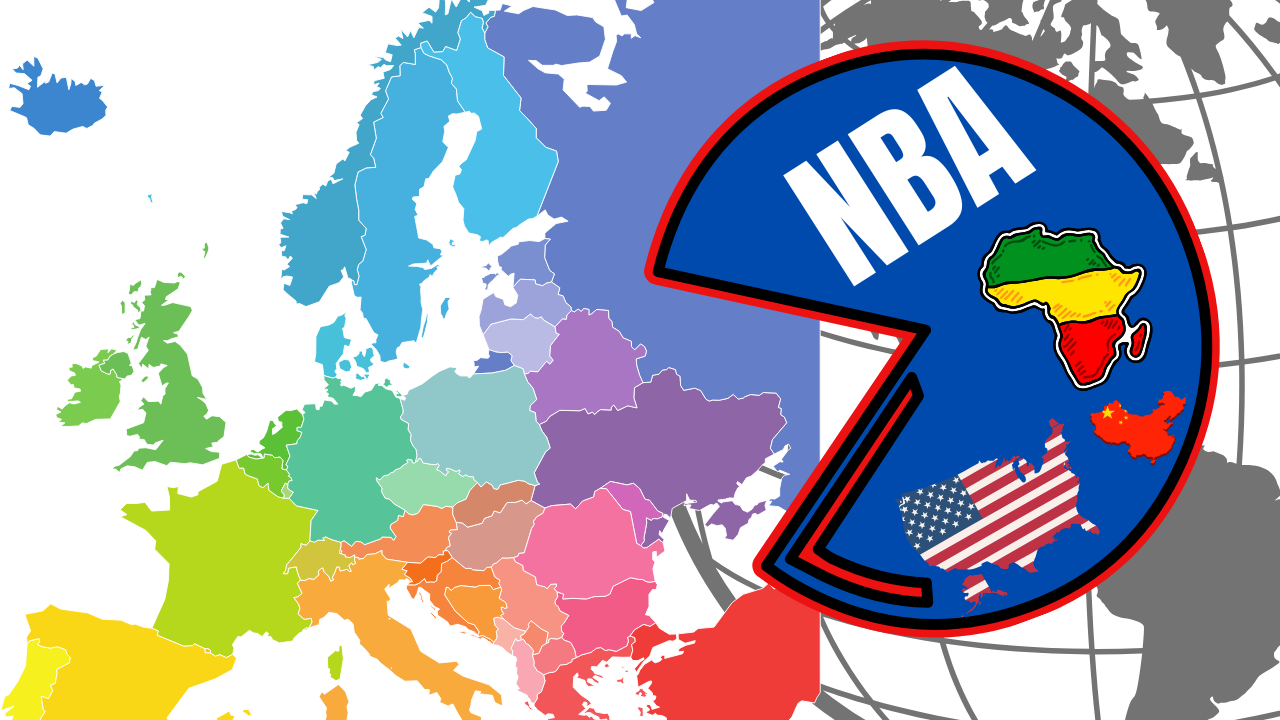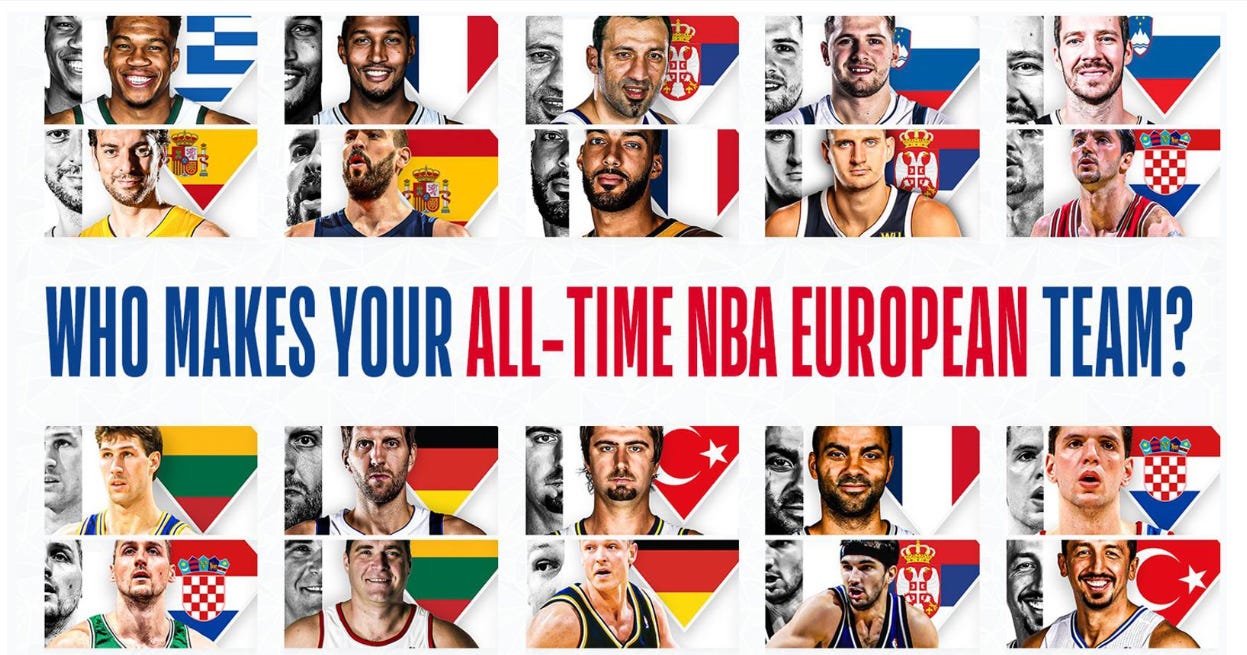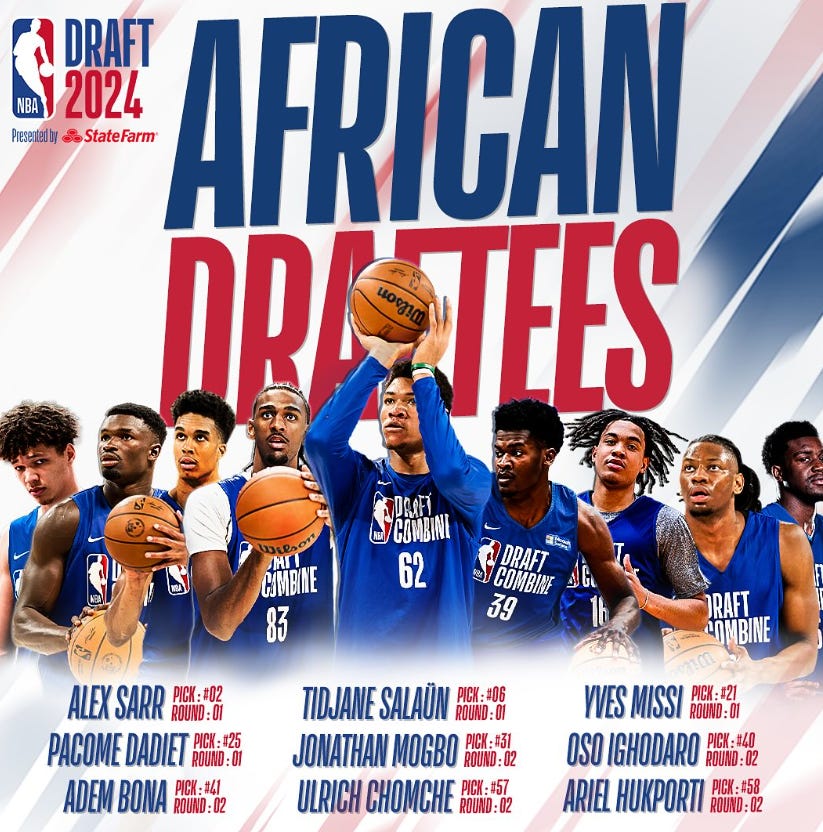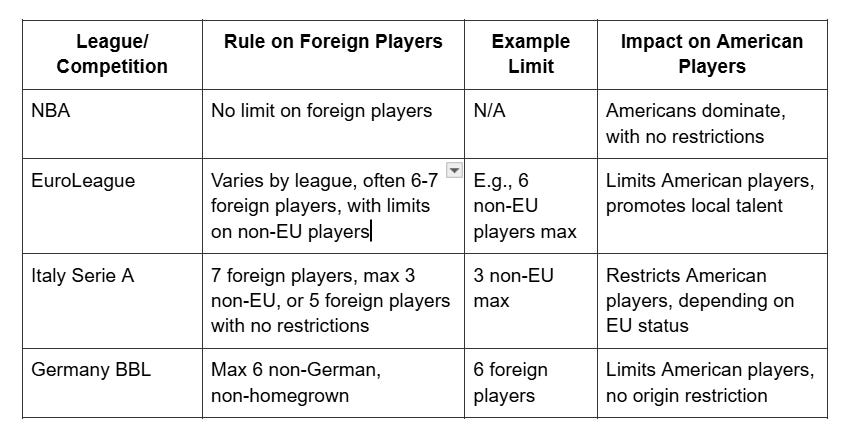THE NBA'S FULL-GLOBE PRESS: WILL NBA EUROPE LIMIT AMERICANS ON ROSTERS?
European leagues often limit foreign players, while the NBA doesn’t—how will this shape NBA Europe?
Disclaimer: The research articles and basic structure presented here are derived from prompts provided by the author and generated with the assistance of artificial intelligence. While efforts have been made to ensure accuracy and relevance, the content reflects the input and direction given by the author, processed through AI, and should be considered within that context.
Recently, the NBA and FIBA held a significant joint press conference in New York, following the NBA's Board of Governors meeting, to discuss the potential expansion of the NBA into Europe. This event, involving NBA Commissioner Adam Silver and FIBA Secretary General Andreas Zagklis, marks a pivotal moment in the global growth of basketball, focusing on creating a new professional league in Europe in partnership with FIBA. This article provides a comprehensive analysis of the discussions, particularly addressing concerns about player rules, including the potential limitation on the number of American players per team.
Player Rules and American Player Limitations
My concern centers on FIBA's purported rule limiting the number of American players per team, particularly in the context of the new league. However, a detailed examination reveals that FIBA's rules primarily apply to international competitions, such as the World Cup and Olympics, and focus on player eligibility for national teams rather than club teams. For instance, FIBA allows one naturalized player per national team roster per game, but this is specific to international play and does not directly limit American players in club competitions (FIBA eligibility rules - Wikipedia).
In contrast, European domestic leagues and competitions like the EuroLeague often have rules limiting the number of foreign players, including Americans, to promote local talent. For example, in Italy's Serie A, teams can sign up to 7 foreign players with a maximum of 3 non-European players, or 5 foreign players with no restrictions (Foreign players limitations for 2017-2018 season [Archive] - InterBasket). Similarly, Germany's BBL allows a maximum of 6 non-German, non-homegrown players, with no restrictions on their origin (r/Euroleague on Reddit: Foreign player restrictions in domestic leagues). These rules vary by league, and the new NBA-FIBA league would likely establish its own regulations, potentially influenced by these existing frameworks.
Given the partnership with FIBA, it's reasonable to assume that player eligibility and roster composition are part of the discussions. Zagklis mentioned the need to protect the fundamentals of FIBA's ecosystem, which "can not only relate to the rules of course, the calendar, but it is a question of respecting the national teams, the national leagues" (NBA, FIBA in ‘serious conversation’ about new European league, FIBA secretary general says - The Athletic). This suggests that player rules, including potential limitations on foreign players, are likely under consideration to align with European basketball traditions.
However, there is no specific public information confirming whether the topic of limiting American players per team was explicitly addressed in the March 27, 2025, press conference or related talks. Silver's comments during the press conference focused on the exploratory nature of the discussions, with no detailed mention of player rules beyond the general format, such as an open league with 12 permanent franchises and 4 rotating clubs (NBA Confirms Europe League Talks, Proposed Format, Rules and Ownership - Sportico). This lack of detail indicates that while player rules are likely part of the planning, the specific issue of American player limits may not have been publicly highlighted yet.
Implications for American Basketball Fans
For American basketball fans concerned about international pressure challenging domestic opportunities, the potential for restrictions on American players in the new league could be significant. The NBA's expansion into Europe, with its emphasis on respecting local traditions, might lead to rules similar to those in existing European leagues, potentially limiting the number of American players per team to balance local and international talent. This could affect the opportunities for American players to compete in Europe, especially given the high number of Americans already playing in European leagues.
Silver has expressed interest in honoring European sport traditions, noting, "I recognize there’s enormous history and tradition here in European basketball, and we want to respect those traditions" (NBA to Explore Potential European League With FIBA Partnership, Adam Silver Says - Bleacher Report). This suggests a willingness to adopt rules that align with European practices, which could include foreign player limits. However, the exact rules for the new league are still in the modeling stage, and no final decisions have been made, leaving room for negotiation and potential adjustments.
Comparative Analysis of Player Rules
To provide a clearer picture, below is a table comparing typical player rules in European leagues and the NBA, highlighting potential implications for the new league:
This table illustrates the diversity in foreign player rules across European leagues, which could serve as a model for the new NBA-FIBA league. Given the partnership with FIBA and the emphasis on respecting local ecosystems, it's plausible that the new league might adopt similar restrictions to balance opportunities for local and American players.
Conclusion
In conclusion, while the topic of player rules, including eligibility, is likely part of the ongoing discussions between NBA and FIBA for the new European league, there is no specific evidence that the limitation on the number of American players per team has been explicitly addressed in the March 27, 2025, press conference or related talks. Given FIBA's focus on international competitions and the variability in European league rules, the new league's regulations will likely be determined in future discussions, potentially aligning with existing European practices. For American basketball fans, this could mean potential challenges to opportunities, but the exact impact remains uncertain until more details are finalized.
____________________
The No Backboard Basketball League is a variant of basketball that provides an alternative basketball development platform and recreational basketball platform while creating a new genre of basketball entertainment. Learn more: https://www.nobackboard.com








